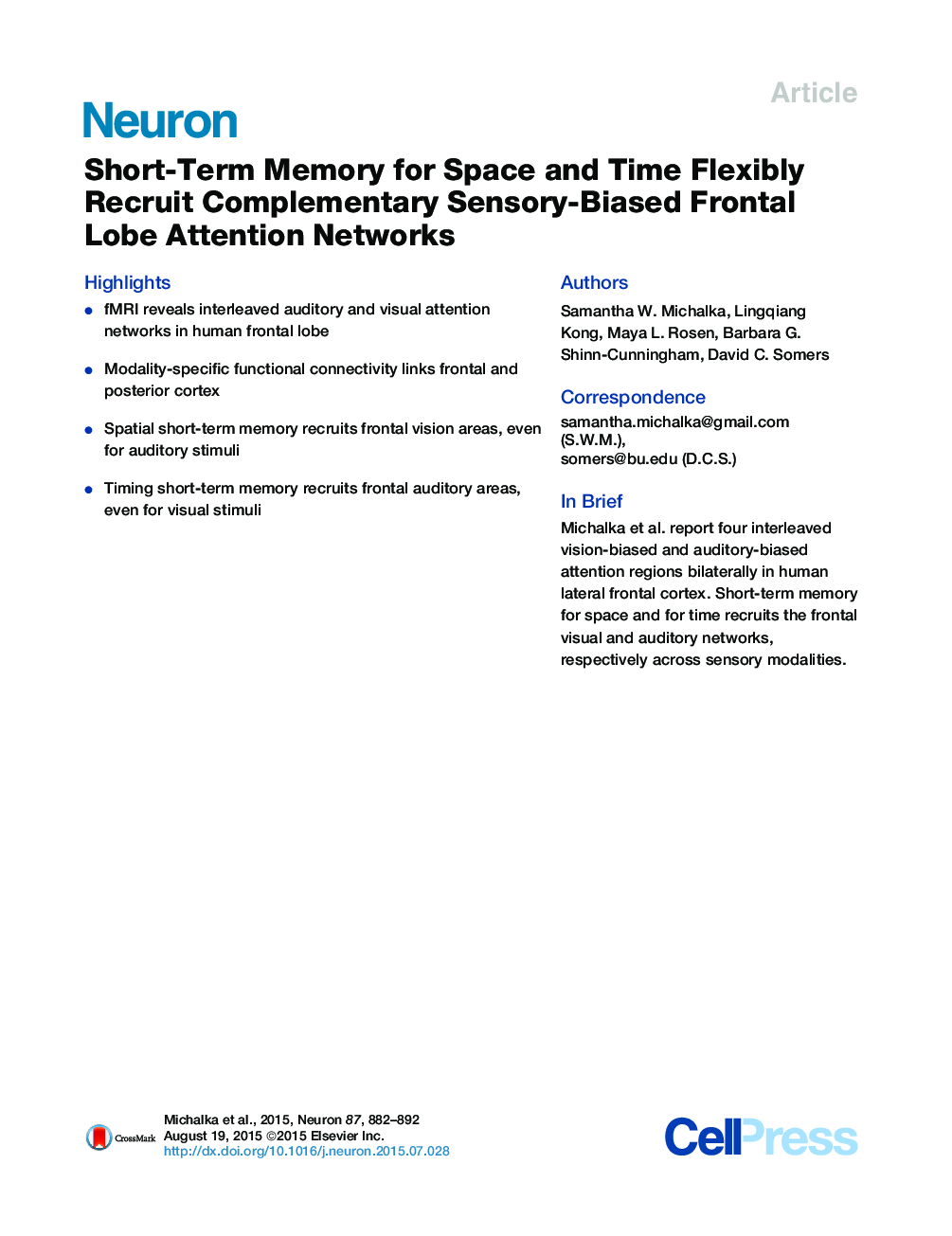| Article ID | Journal | Published Year | Pages | File Type |
|---|---|---|---|---|
| 4320828 | Neuron | 2015 | 11 Pages |
•fMRI reveals interleaved auditory and visual attention networks in human frontal lobe•Modality-specific functional connectivity links frontal and posterior cortex•Spatial short-term memory recruits frontal vision areas, even for auditory stimuli•Timing short-term memory recruits frontal auditory areas, even for visual stimuli
SummaryThe frontal lobes control wide-ranging cognitive functions; however, functional subdivisions of human frontal cortex are only coarsely mapped. Here, functional magnetic resonance imaging reveals two distinct visual-biased attention regions in lateral frontal cortex, superior precentral sulcus (sPCS) and inferior precentral sulcus (iPCS), anatomically interdigitated with two auditory-biased attention regions, transverse gyrus intersecting precentral sulcus (tgPCS) and caudal inferior frontal sulcus (cIFS). Intrinsic functional connectivity analysis demonstrates that sPCS and iPCS fall within a broad visual-attention network, while tgPCS and cIFS fall within a broad auditory-attention network. Interestingly, we observe that spatial and temporal short-term memory (STM), respectively, recruit visual and auditory attention networks in the frontal lobe, independent of sensory modality. These findings not only demonstrate that both sensory modality and information domain influence frontal lobe functional organization, they also demonstrate that spatial processing co-localizes with visual processing and that temporal processing co-localizes with auditory processing in lateral frontal cortex.
